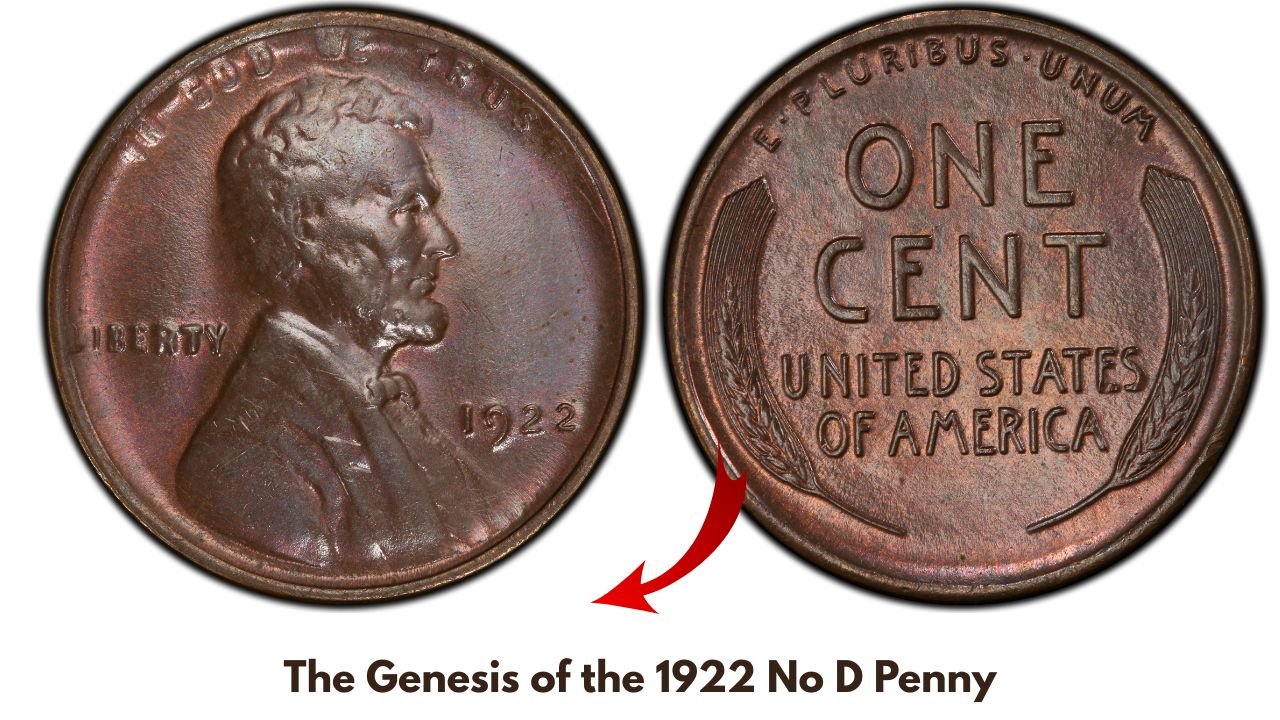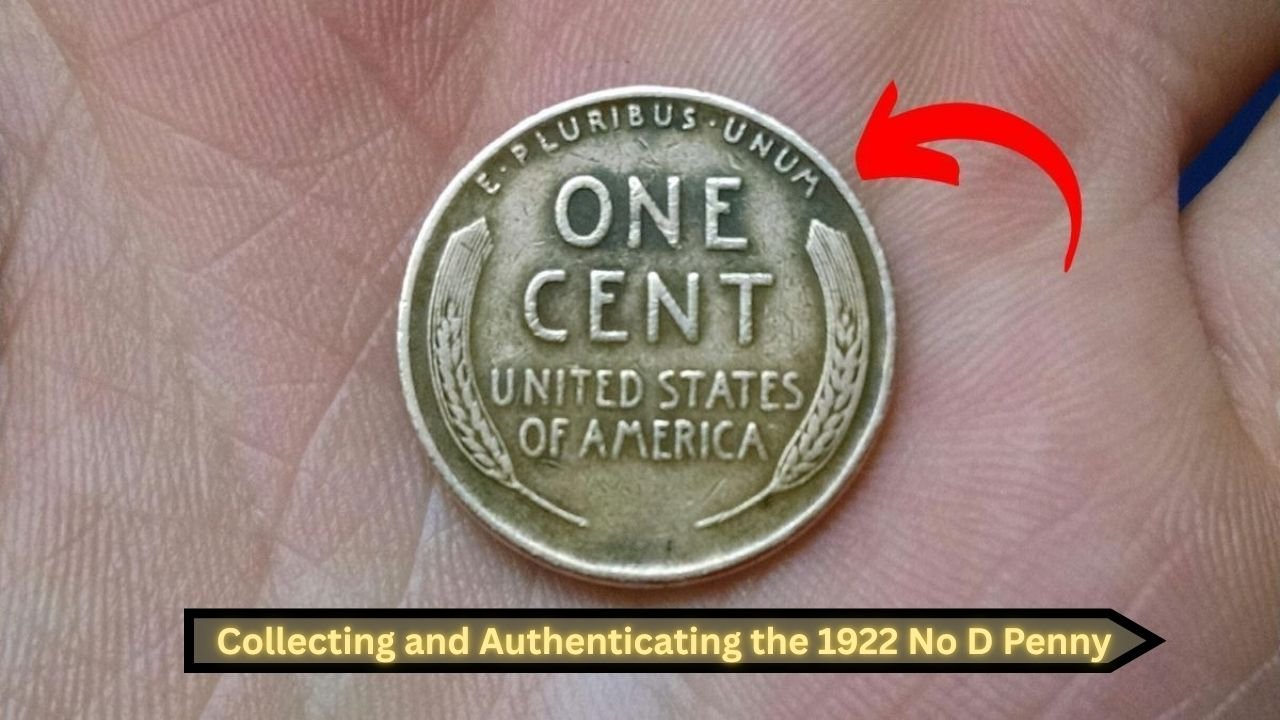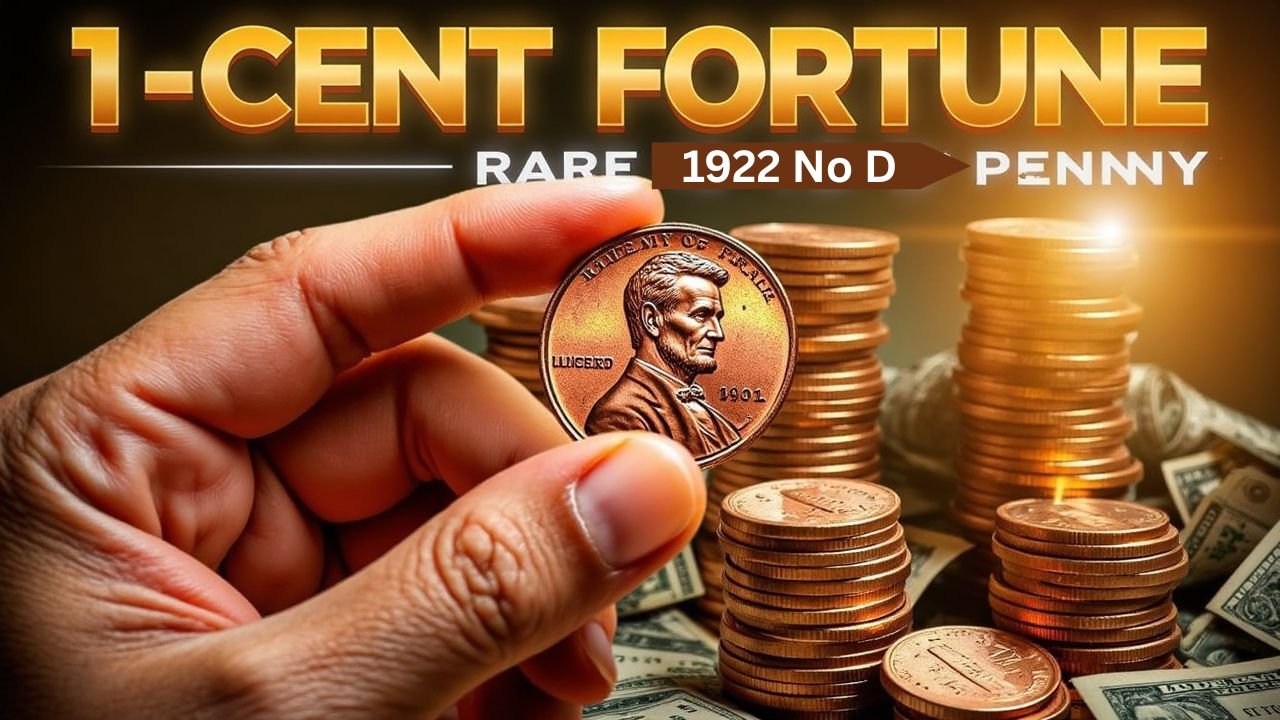Coin collecting is filled with various curious anomalies, but one of the most alluring is the 1922 No D Lincoln Wheat penny.
This rare version of the Lincoln cent is a cherished coin with numismatists and collectors’ fancies, often auctioned for well over $30,000.
Let’s explore where it came from, what makes it special, and how much this fantastic coin is worth.
The Genesis of the 1922 No D Penny
The Denver Mint was the only mint producing Lincoln cents in the year 1922. The whole production of pennies from that year was to be marked with “D,” indicating they’d been minted in Denver. However, due to an unusual occurrence, there came into being an alleged No D variety.
In a bid to extend the life of dies that were already giving in to wear and tear, mint workers undertook mostly polishing of the dies. This over-polishing resulted in the unintended removal of the “D” mint mark from some coins, hence the scarce variant, 1922 No D Penny.

Identifying the 1922 No D Penny
Not all 1922 pennies without a visible “D” mint mark are considered authentic and part of the No D varieties. Therefore, collectors wishing to establish genuine specimens should take note of the following markers:
- Strong Reverse Details: The most coveted of the No D pennies have been struck with a freshly prepared reverse die exhibiting razor-sharp reverse characteristics.
- Die Pair Classifications: There are four die pair classifications known to be associated with the 1922 No D and Weak D varieties. Die Pair #2 is notable in that it consistently produces coins that lack the mint mark “D” and maintain a sharp reverse strong enough to depict such class.
Valuation and Market Trends
Many aspects that factored into the final worth of a 1922 No D penny include its condition, color, and of course, the exact die pair from which it was made. An overview of figures reflecting current market valuations:
| Grade | Description | Approximate Value |
|---|---|---|
| Good (G-4) | Heavily worn but date and major details visible. | $125 |
| Extremely Fine (EF) | Light wear with all design elements sharp and clear. | $650 |
| Mint State (MS-63) | Uncirculated with minor imperfections; strong reverse. | $3,600 |
| MS-64 Red & Brown | Slightly higher quality with more red hues. | $4,600 |
| MS-64 Red | Predominantly red coloration; highly sought after. | Up to $50,000 |
It is interesting to note that bright, totally red examples with a very strong reverse are exceedingly rare, and sometimes even command prices over $50,000.
Things Affecting the Value
There are several aspects influencing this coin’s valuation: 1922 No D Penny:
- State: Coins tend to be worth more when they are in higher conditions; a grade under uncirculated can add significant value.
- Color: Coins are graded based on their color-Brown (BN), Red Brown (RB), and Red (RD)-and because red coins seldom have any oxidation therefore, are preferred by everyone.
- Die Pair: Die Pair #2 with a stronger reverse is widely considered the “most popular” die by collectors.
Collecting and Authenticating the 1922 No D Penny
Authentication is important given the coin’s rare and expensive nature. How collectors authenticate are:
- Professional Grading: Submit those coins to professional-grade grading services like the Professional Coin Grading Service (PCGS) or the Numismatic Guaranty Corporation (NGC).
- Die Analysis: Familiarize yourself with the characteristics of the die pairs to verify that the coin matches the known features of the authentic No D pennies.
- Market Research: Know the standards, current trends, and recent auction results that can lead you to calculate the value of the coin.

The 1922 No D Lincoln Wheat Penny bears testimony to the fascinating complexities of coin minting and the appeal of numismatic anomalies. The accident of its creation, combined with its rarity and the tales it has borne, makes it a prized possession for collectors.
Be you an antique collector or a mere interested enthusiast, the race for this coin will show the way through the decorative walls of minting history and the halfway enduring nature of fine craftsmanship.
FAQS:
How to detect a real 1922 No D penny from a 1922-D penny with a weak mint mark?
1922 no D pinned coins also show strong reverse designs and then lack any such marking as the “D” mint. The weak or faint “D” penny is a variety defined and not usually very well valued.
Why did not mint any penny in 1922 at the Philadelphia Mint?
In 1922, the Denver Mint was solely responsible for producing Lincoln cents, leading to the absence of Philadelphia-minted pennies that year.
Should I invest in a 1922 No D Penny?
Like with any investment, depending on the situation, it is a good idea to do one’s homework and consult a handful of numismatic professionals. The 1922 No D Penny, which has grown in value historically, is subject to changing market conditions.
